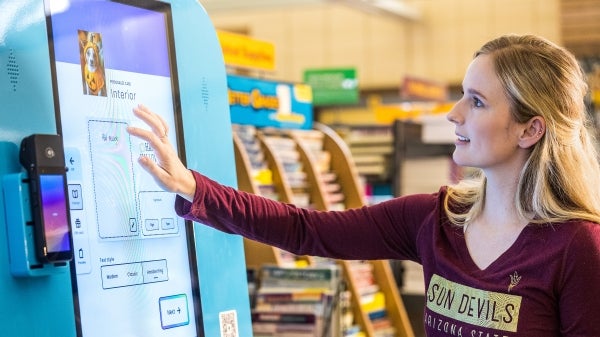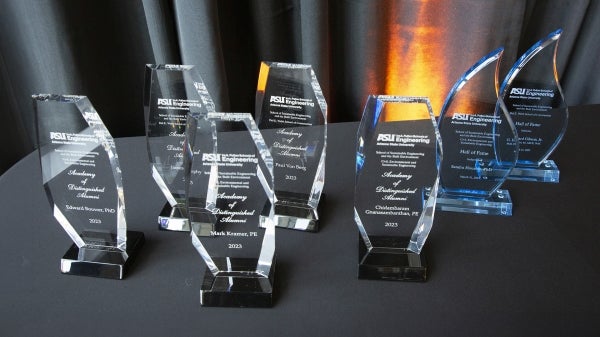The final weeks of the holiday shopping season are closing in, and it’s expected to be a record year for retailers, despite pandemic-related supply chain stressors. The National Retail Federation has predicted that holiday spending will shatter records this year, with an 8.5% to 10.5% increase in spending over 2020. But are retailers ready for what comes next?
Returning holiday gifts has become a post-holiday tradition of sorts. Consumers rush back to stores or flock online to exchange gifts they don’t necessarily care to keep. Last year, the estimated cost of holiday returns was $101 billion. With an increase in holiday spending this year and a shift to e-commerce, an Arizona State University expert predicts a “tsunami” of holiday gift returns.
Hitendra Chaturvedi, a professor of practice in the Department of Supply Chain Management in the W. P. Carey School of Business, spoke with ASU News about the impact of gift returns this holiday season.
Question: Every year, consumers return holiday gifts. Why will this year be more significant, and what can retailers and consumers expect?
Answer: This holiday season online sales will, for the first time, cross $200 billion, with estimates somewhere around $215 billion, totaling about 20% of all holiday retail sales, which is also a first. The return rate for products from a store versus a website are very different. The return rate for online sales is about 25%, while the return rate for physical stores is around 8%. Based on those numbers, we can expect about $120 billion worth of products returned after the holiday season, with $54 billion coming from online sales alone. Moreover, with warehouses filled to capacity due to supply chain issues, retailer and e-tailers will have to plan ahead and figure out where to keep these returns and process them. If not processed and handled timely, these returns have a bad habit of eating into the profit margins.
Hitendra Chaturvedi
Q: Where does this type of merchandise go? Can it be resold, or is it destined for the landfill?
A: The answer is product specific. Have you ever tried returning an inexpensive product and Amazon told you to keep it, but still gave you credit? This is because some items are so inexpensive that the cost of processing and bringing them back is more than the value of the product. From the moment a customer returns a product, five to six entities/companies act as the intermediary before the product finds its final destination, which could be in a landfill, recycled or sold as a refurbished item to a new customer. Cheaper electronics and plastics get scrapped, and as we all know, only a fraction of that is recycled and the rest goes into the landfill. Fast fashion is made from petroleum products, and so they are baled and sold in lots to overseas bidders and land up in a third world country where a majority of it gets burned or ends up in a landfill. Higher-end electronics get refurbished and repaired and then resold on websites like eBay or overstock.com.
Q: With a high volume of returns expected, are there better methods for exchanging holiday gifts?
A: Yes, we can do simple things to reduce this onslaught. For the 20% of people who have not bought gifts: Give gift cards so that the recipient can choose what they want, which will reduce the chances of returns, or maybe give a gift of a balloon ride, or a ticket to a movie, or dinner for two, or even better — gift on your loved one’s behalf to feed the hungry. The service industry has been struggling post-pandemic, and holiday shopping has not helped them as much because this holiday season shoppers went shopping with a vengeance for products, not services.
There is not much that can be done for the folks who may not like a gift. It will be exchanged. But advice for retailers getting these returns back: Process them carefully as many of these products will not be defective. Not all returns need to go into a landfill or scrapped because of supply chain inefficiencies, warehouse space shortages or labor shortages. A little bit of triage and pre-planning can help reduce the amount that will go into a landfill.
Top photo courtesy of pixabay.com.
More Business and entrepreneurship

ASU alum's personalized greeting card kiosk debuts on Tempe campus
Everyone knows how disheartening it is to dash into a store to grab a last-minute holiday card and find the selection picked over and in disarray.An Arizona State University alumna has created a…

Celebrating industry giants and distinguished alumni
Four outstanding alumni and two industry leaders will be honored at the School of Sustainable Engineering and the Built Environment’s Hall of Fame and Academy of Distinguished Alumni event, scheduled…

ASU bachelor's degrees in business step up in rankings
The W. P. Carey School of Business at Arizona State University made strides in several areas in the new U.S. News & World Report 2025 Best Colleges Rankings. The school's overall…

